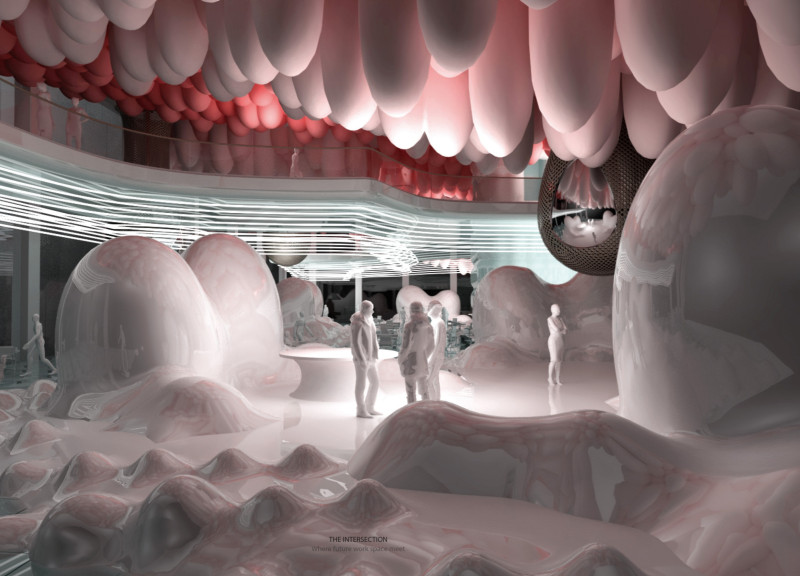5 key facts about this project
The OFF3 Offices at The Intersection redefine how people think about workplace environments. Located in an area where hybrid work is now common, the design seeks to support both individual creativity and team collaboration. The overall concept focuses on creating a space that is inviting while meeting the modern requirements for privacy, acoustic comfort, and personal expression.
Office Layout and Spatial Segmentation
The office is organized into three distinct layers: private, semi-private, and public. This separation allows for a more focused work experience by reducing noise and interruptions often found in open office spaces. Employees can find the right setting for their tasks, whether they need to concentrate alone or engage with colleagues. Each layer is designed to facilitate different types of interactions, enhancing overall productivity.
Innovative Work Pods
Key to the design are the unique work pods, which cater to a range of group sizes. The single-person work pod is especially noteworthy; it descends from the ceiling, providing a quiet area for phone calls and meetings. This combination of form and function addresses the need for privacy in a lively workplace. The double pod supports two to four individuals, making it suitable for informal discussions or personal calls, featuring comfortable lounge seating that invites conversation.
Community-Centric Kitchen Space
The kitchen area acts as a central gathering point in the office. It is designed to encourage social interaction among employees. This communal space helps build relationships outside of formal work tasks. By incorporating a layout for relaxation and casual gatherings, the design highlights the importance of informal areas in fostering connections and teamwork within the office.
Acoustic Considerations and Aesthetic Intent
Materials are not specifically mentioned in the presentation, yet acoustic separation remains a priority. The design places importance on creating a warm environment that promotes comfort. Attention to finishes and textures plays a significant role in achieving the aesthetic goals. The thoughtful arrangement of light, space, and function results in an environment that responds effectively to the challenges of modern work.






















































